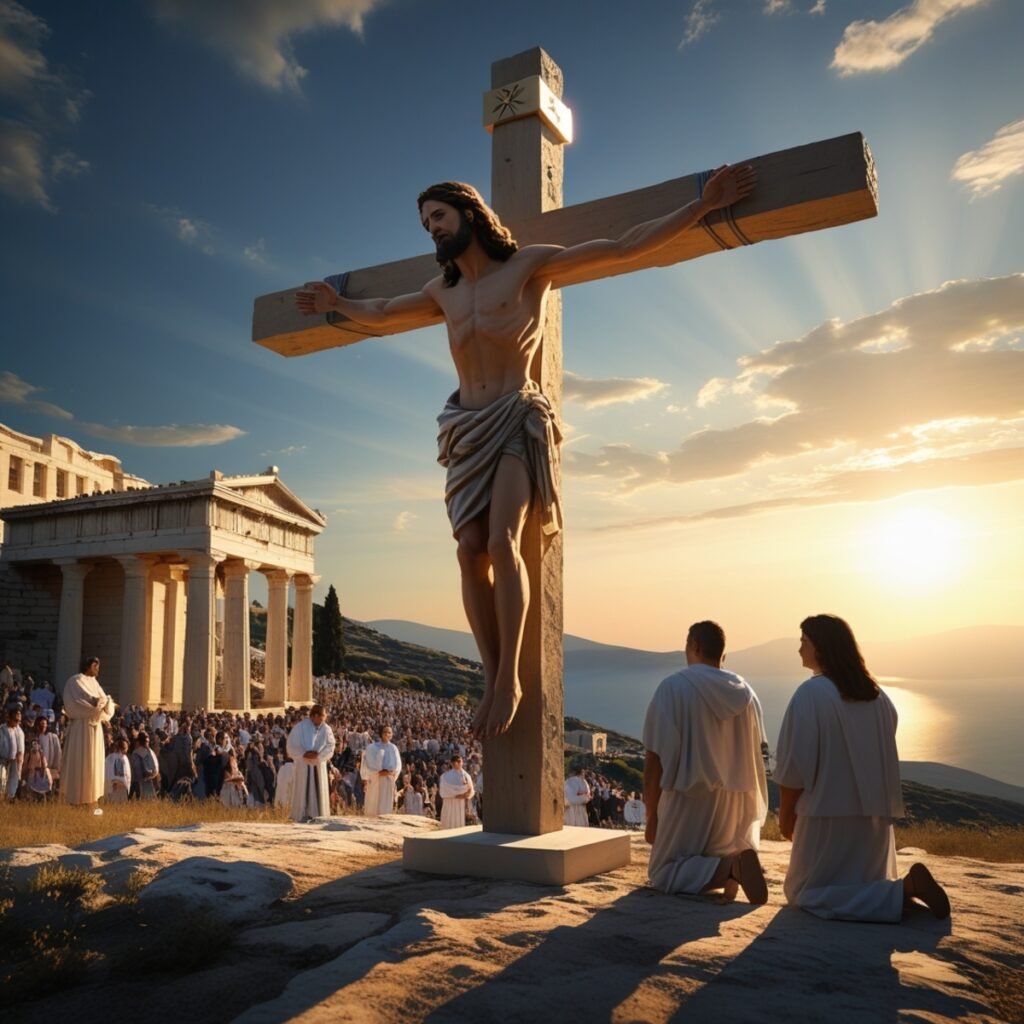Andrew, one of Jesus’ twelve disciples, holds the unique distinction of being the first called (John 1:40-42). Often overshadowed by his brother Peter, Andrew’s life and ministry reveal the heart of a man devoted to bringing people to Jesus and spreading the Gospel far beyond his homeland. His missionary journeys to places like Greece, Russia, and Scotland left an enduring legacy, and his martyrdom became a symbol of unwavering faith.
In this blog, we’ll explore Andrew’s global impact, his role as a connector, the challenges he faced, and the powerful symbolism of St. Andrew’s Cross.
Andrew’s Call: Introducing Others to Jesus
Andrew’s story begins as a disciple of John the Baptist. When John pointed to Jesus and declared, “Look, the Lamb of God!” (John 1:36), Andrew immediately followed Jesus. His first instinct was to find his brother Peter and tell him, “We have found the Messiah” (John 1:41).
Andrew’s introduction of Peter to Jesus illustrates his character as a connector—a man who brought others into the presence of Christ. This simple act set the stage for Peter’s transformation into a central figure of the early Church, highlighting Andrew’s pivotal yet often understated role in the Gospel narrative.
Andrew’s quiet faithfulness also shines in the story of the feeding of the 5,000. When Jesus asked how they could feed the crowd, it was Andrew who brought forward a boy with five loaves and two fish, saying, “Here is a boy with five small barley loaves and two small fish, but how far will they go among so many?” (John 6:8-9). Andrew didn’t know how Jesus would solve the problem, but he trusted enough to bring what little they had.
Andrew’s Missionary Journeys
Andrew’s missionary work took him far beyond the familiar regions of Judea and Galilee. Early Christian traditions describe his travels to some of the most distant and challenging locations of the ancient world.
1. Missionary Work in Greece
Andrew preached extensively in Greece, focusing on cities like Patras. His ministry in this culturally rich and diverse region involved confronting pagan practices with the message of Jesus Christ. Despite opposition, Andrew’s bold preaching led many to embrace the faith, including prominent families who later became leaders in the early Church.
2. Influence in Russia and the Slavic Regions
According to tradition, Andrew traveled to regions around the Black Sea, including modern-day Russia and Ukraine. He is said to have reached as far as Kiev, where he preached to the Slavic people. His influence in these regions has made him a revered figure in Eastern Orthodoxy, where he is considered the founder of the Church of Byzantium, later known as the Ecumenical Patriarchate.
3. Evangelism in Scotland
Legends suggest that Andrew’s relics were brought to Scotland, where he became the patron saint of the nation. According to one account, St. Regulus brought Andrew’s relics to Scotland after receiving a vision. The St. Andrew’s Cross, featured on Scotland’s national flag, serves as a testament to his enduring spiritual influence.
The Challenges of Andrew’s Mission
Andrew’s travels were not without significant challenges. As he ventured into unfamiliar lands, he faced:
- Cultural Barriers: Preaching the Gospel to pagan and polytheistic societies often met with resistance and hostility.
- Physical Hardships: Long journeys on foot or by sea, often in harsh conditions, were a test of endurance and faith.
- Persecution: Andrew’s boldness in preaching Christ as the only way often put him in danger, ultimately leading to his martyrdom.
Despite these difficulties, Andrew’s unwavering commitment to sharing the Gospel is a powerful example of faith and perseverance.
Andrew’s Martyrdom and the Symbolism of St. Andrew’s Cross

Andrew’s life ended in martyrdom in the Greek city of Patras. Refusing to renounce his faith, he was sentenced to be crucified. Tradition holds that Andrew requested to be crucified on an X-shaped cross, feeling unworthy to die on the same type of cross as Jesus.
This X-shaped crucifixion became known as St. Andrew’s Cross and is now a powerful Christian symbol. It represents humility, sacrifice, and unwavering faith. The cross is also featured on the flag of Scotland, known as the Saltire, symbolizing Andrew’s spiritual influence on the nation.
Lessons from Andrew’s Life
Andrew’s life offers profound lessons for modern Christians.
- The Power of Invitation: Andrew’s introduction of Peter to Jesus shows the ripple effect of a simple act of faith. His willingness to bring others to Jesus challenges us to do the same in our own lives.
- Global Vision: Andrew’s missionary journeys remind us of the importance of stepping out of our comfort zones to share the Gospel with people from all walks of life.
- Faithful Endurance: Andrew’s willingness to face persecution and martyrdom inspires us to remain steadfast in our faith, no matter the challenges we face.
St. Andrew’s Cross: A Symbol of Faith
The St. Andrew’s Cross has become a lasting emblem of Andrew’s humility and devotion. It also serves as a reminder that each believer has a unique cross to bear and a unique role to play in God’s plan.
In Scotland, the Saltire flag is a national symbol of pride, reflecting the deep spiritual heritage Andrew left behind. His life continues to inspire countless people to live boldly and humbly for Christ.
Andrew’s Modern Legacy
Andrew’s influence extends beyond his earthly ministry. He is the patron saint of multiple countries, including Scotland, Russia, and Greece. In the Eastern Orthodox Church, he is honored as the founder of the Ecumenical Patriarchate. His quiet faithfulness, courage, and global vision continue to challenge and inspire Christians today.
Conclusion: Following in Andrew’s Footsteps
Andrew may not have been the most vocal or prominent disciple, but his quiet faithfulness and dedication left an indelible mark on Christianity. His story reminds us that even small actions—like introducing someone to Jesus—can have a profound impact.
How does Andrew’s life inspire you to share your faith? Let his legacy encourage you to step out in humility, bring others to Christ, and embrace the unique calling God has for your life.



